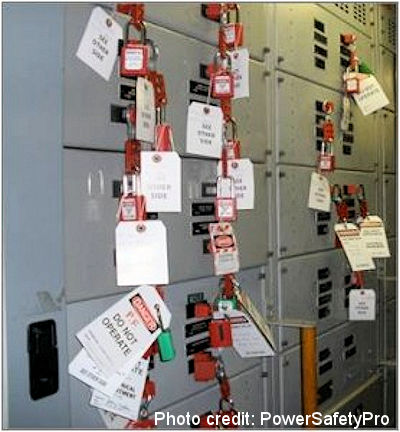Step 1. Identify Energy Sources and Energy-Isolating Devices
The first step in controlling energy is to identify all equipment in your workplace that requires servicing or maintenance. To identify equipment that requires servicing or maintenance:
- determine the form of energy that powers the equipment, including potential energy that may remain when the energy source is disconnected; and
- label the energy sources so that workers will know which energy source powers what equipment.
Before an authorized employees turn off equipment, they must have knowledge of the type and magnitude of the energy, the hazards of the energy to be controlled, and the method or means to control the energy.
Example 1
Industrial coffee bean roasters must be serviced to maintain optimum bean flavor and reduce fire risk. Depending on equipment options, some have rotating, heated drums; natural gas burners; cyclone chaff collectors; rotating cooling agitators; motorized trays; powered paddles; cooling blowers; and integrated carbon monoxide and heat exhaust systems. Once turned off, the electrical, mechanical (moving parts), chemical (natural gas), and thermal (heated parts) energies must be identified and controlled.
After identifying the energy sources, identify the devices that will effectively separate or block the energy from the equipment, preventing its activation or movement. Each energy source must be disconnected with an energy-isolating device (EID). Energy-isolating devices are mechanical devices that physically prevent the transmission or release of energy.
Energy-isolating devices can be:
- disconnect switches (main)
- line valves
- manually operated electrical circuit breakers
- bolted blank flanges
- bolted slip blinds
- safety blocks
- any similar device used to block or isolate energy
Example 2
Replacing a saw blade on a table saw. These tools have a rotating blade powered by an electric motor. Once turned off, the mechanical energy from the rotating blade must be allowed to come to a complete stop and the electrical energy must be controlled.
Knowledge Check Choose the best answer for the question.
3-2. What is the first step in controlling energy in your workplace?
You forgot to answer the question!

